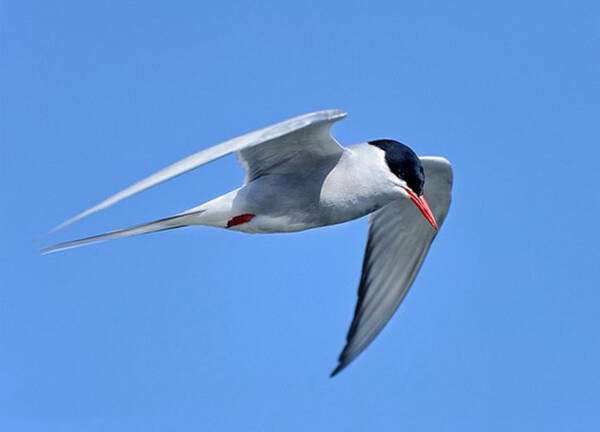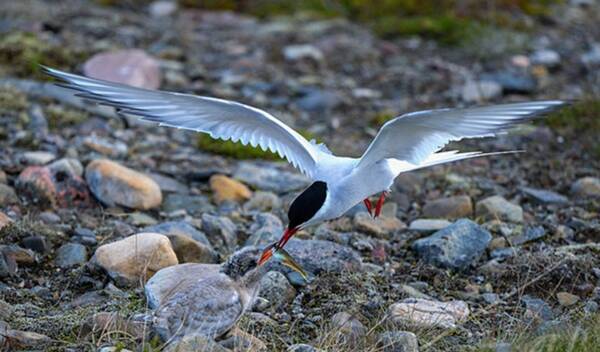The furthest flying bird on Earth is the Arctic tern, whose ability to travel long distances is rare. Arctic terns migrate from their northern breeding areas south to the ocean near Antarctica, and then migrate north back to their breeding areas. The total journey is more than 40,000 kilometers, which is the longest known migration route among animals.

Arctic terns are medium-sized birds. The body length is 36 cm, the wingspan is 76-85 cm, and the weight is 80-120 grams. Characterized by a "black hood" on its head, Arctic terns are very similar to common terns and red terns, but their color and appearance are slightly different. Compared with the common tern, the arctic tern has a longer tail and the color of its bill is duller. Compared with the red tern, its body color is slightly darker and its wings are longer.

Arctic terns are lightweight seabirds capable of flying long distances. Arctic terns breed in the Arctic Circle when it is summer in the Northern Hemisphere. They skim low over the waves, catching small fish and hard-shelled animals like crustaceans from the sea to feed on. When winter comes and the water along the coast freezes, the terns begin their long-distance migration. They fly south, cross the equator, and circle half of the earth to the ice-covered Antarctica, where they enjoy the southern hemisphere's summer. It is not until winter in the southern hemisphere arrives that they fly north again, returning to the North Pole. It travels between the two poles once a year, covering tens of thousands of kilometers.

Among all migratory animals, the Arctic tern's ability to travel long distances is rare. In summer, they move from the Arctic Circle in Canada to Massachusetts in the United States. In winter, they fly to another polar region, the Antarctic, to overwinter. A tern's tail is forked and its wings are narrow and long. This pair of wings has much greater buoyancy than other flying birds when flying in the air.
In March every year, Arctic terns, which have been guests in Antarctica for several months, gather into small flocks and prepare to go north for an ultra-long-distance journey, flying about 18,000 kilometers on the way back to their breeding grounds in the Arctic. Before the expedition, they must completely shed their old feathers and replace them with brand new ones. They will depart from the Antarctic Peninsula, fly to southern Africa, cross the mountains, continue north through the entire tropical region, fly along the coast of West Africa to the European continent, and finally fly to the Arctic to settle down. Starting from the end of summer in Antarctica, flying to the North Pole coincides with the beginning of summer. No other animal can compare to the length of time the Arctic tern enjoys the sun. After completing the longest migration of any animal on Earth, they set up camp in the Arctic in early May to begin a new breeding cycle.

Although humans are the master of all things and have built very modern aircraft, it is not easy to travel back and forth between the two poles. Therefore, the spirit and courage of terns in pursuit of light despite hardships are particularly worth learning. Because they always spend their days in the summer at the poles, and the sun never sets in the summer at the poles, they are the only creatures on the earth that always live in the light.
Not only that, they also have very tenacious vitality. In 1970, someone caught an Arctic tern with a band on its leg, and it turned out that the band had been put on in 1936. In other words, this Arctic tern has lived for at least 34 years. From this calculation, it will fly at least more than 1.5 million kilometers in its lifetime. Tracking studies of Arctic terns have found that they can live more than 33 years, and a lifespan of 20 years is likely to be quite common.
animal tags:
We created this article in conjunction with AI technology, then made sure it was fact-checked and edited by a Animals Top editor.